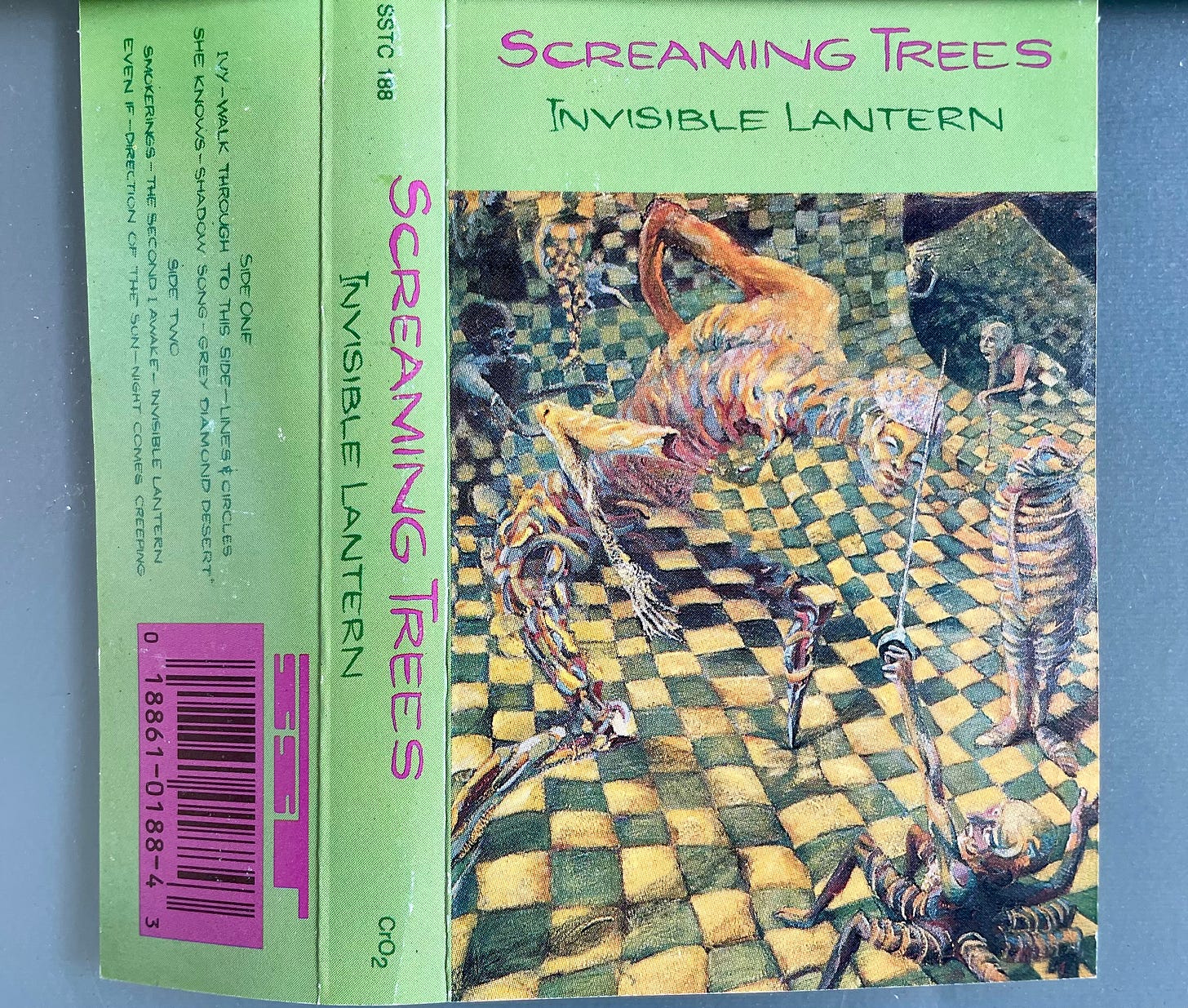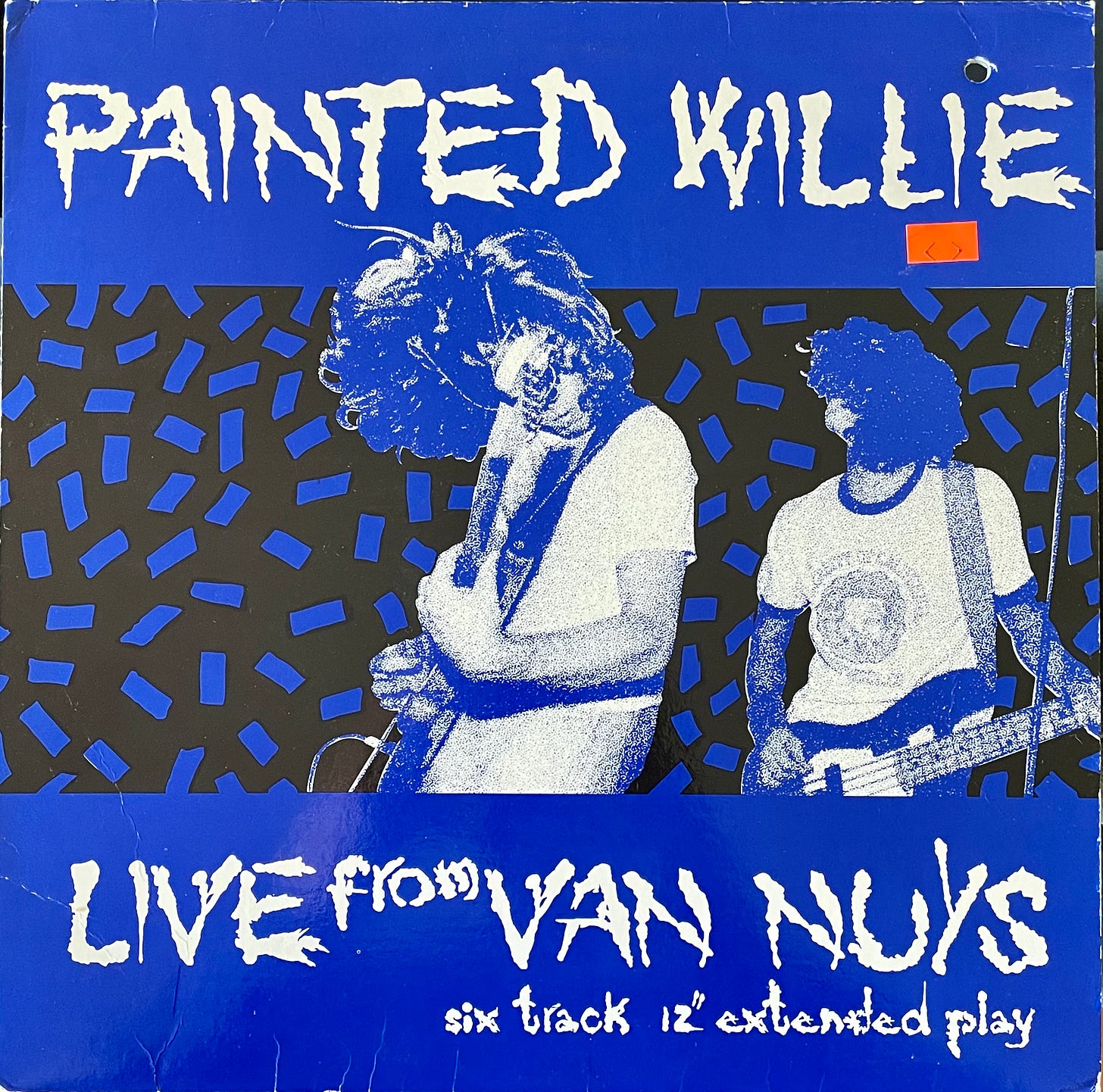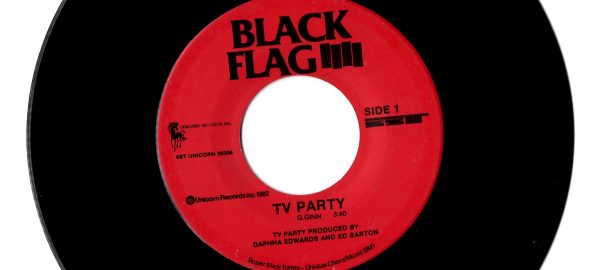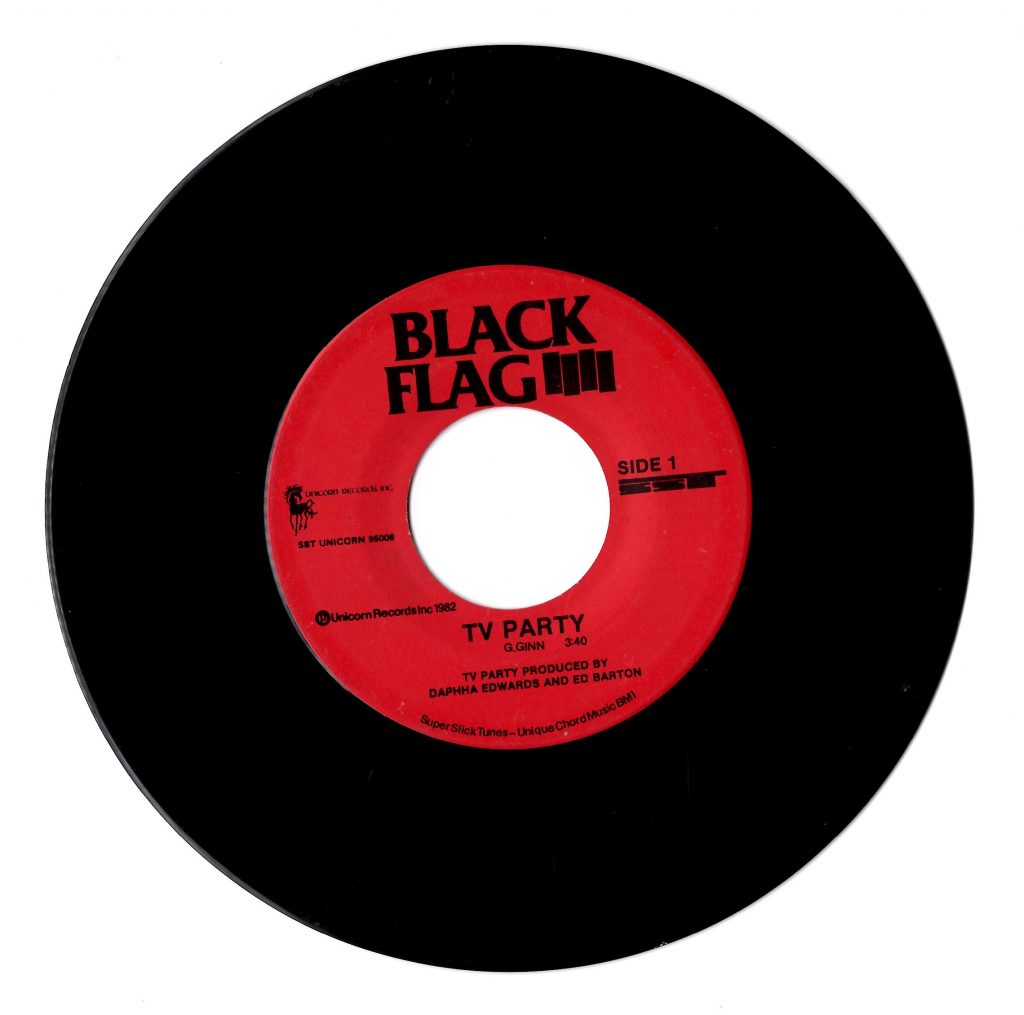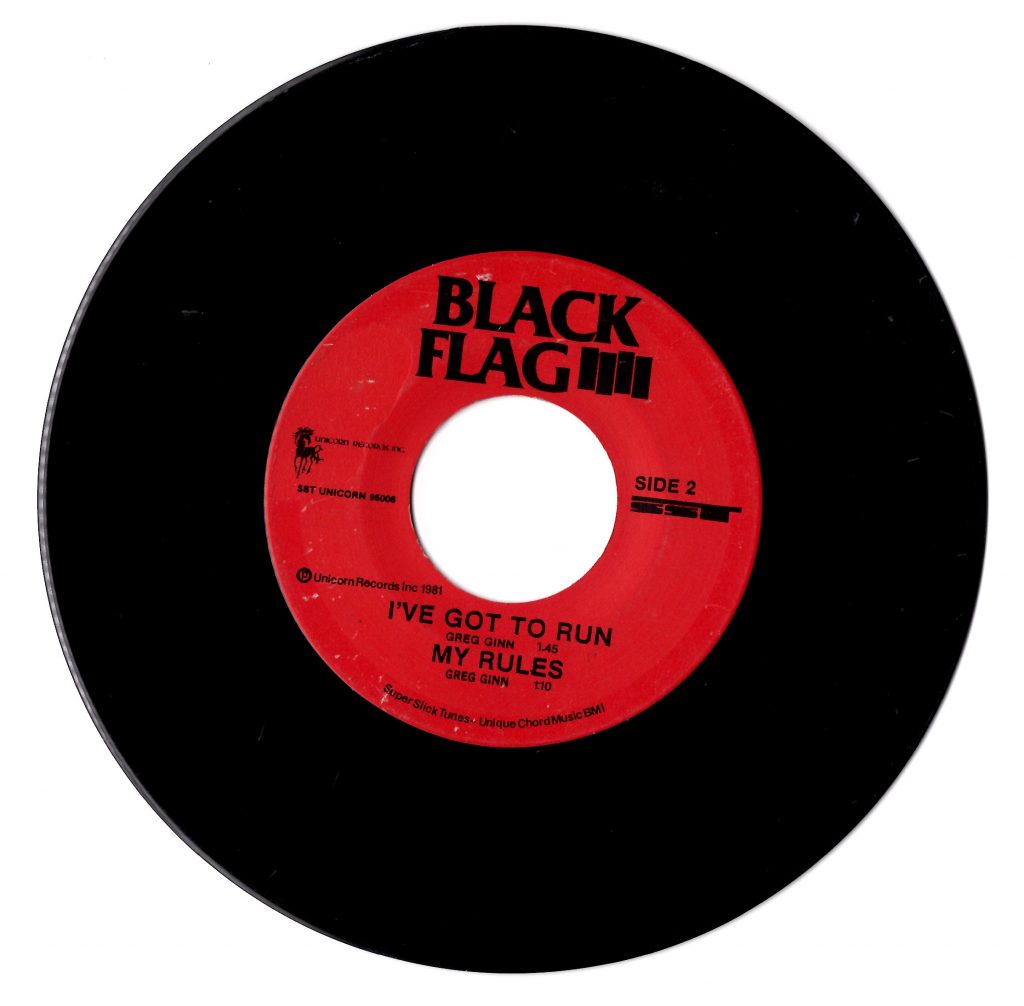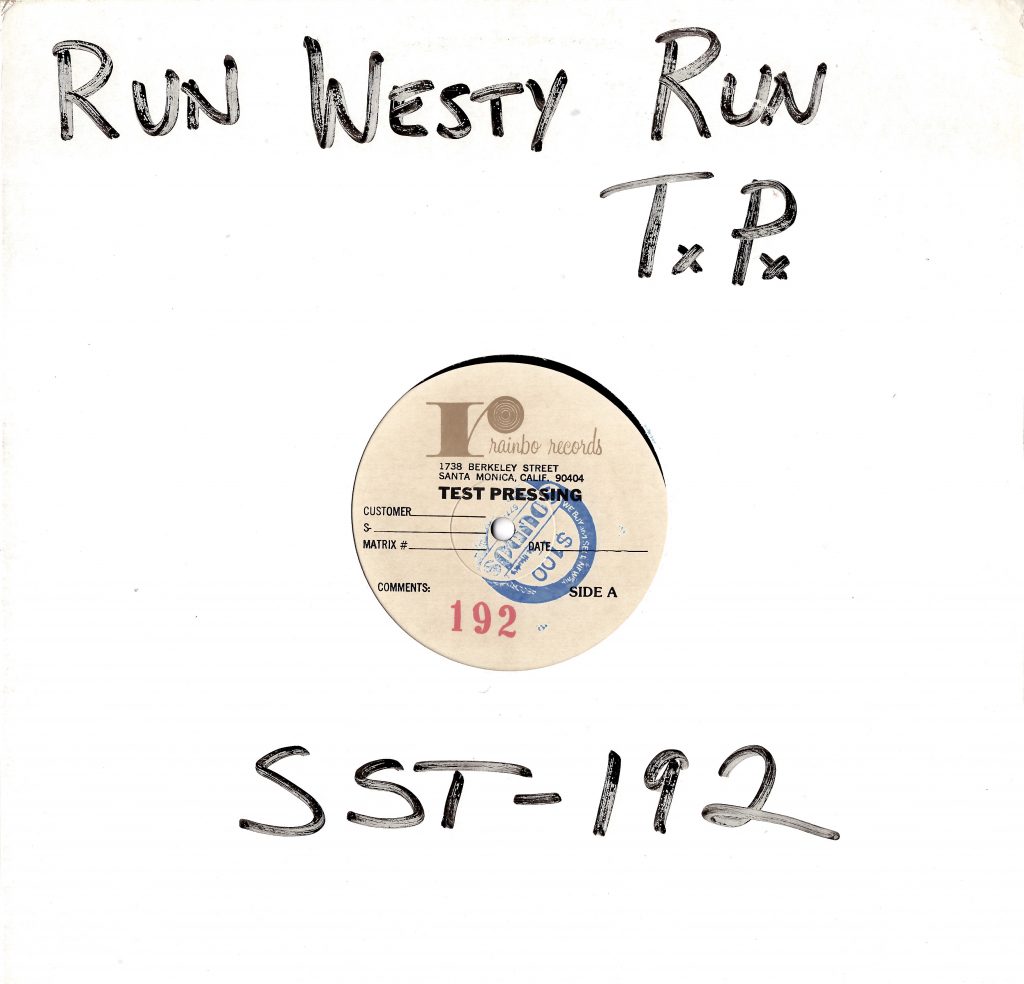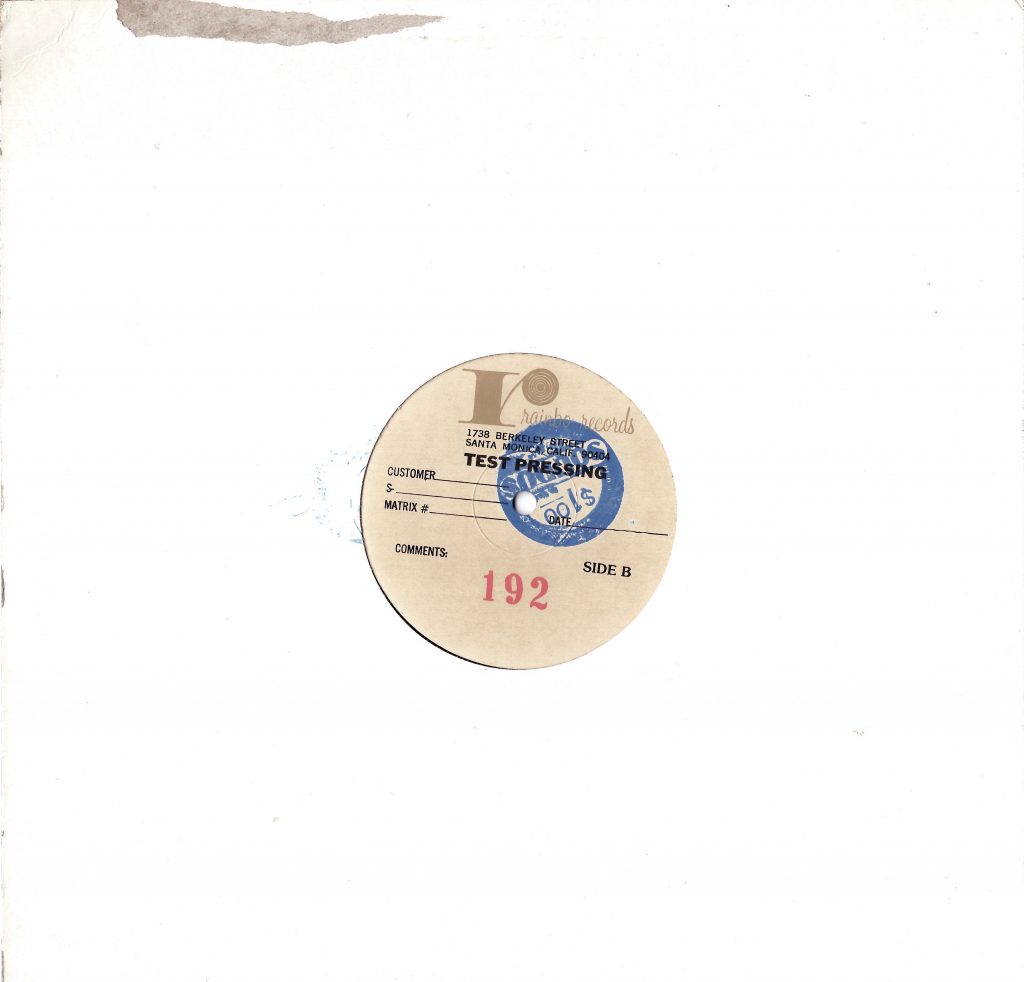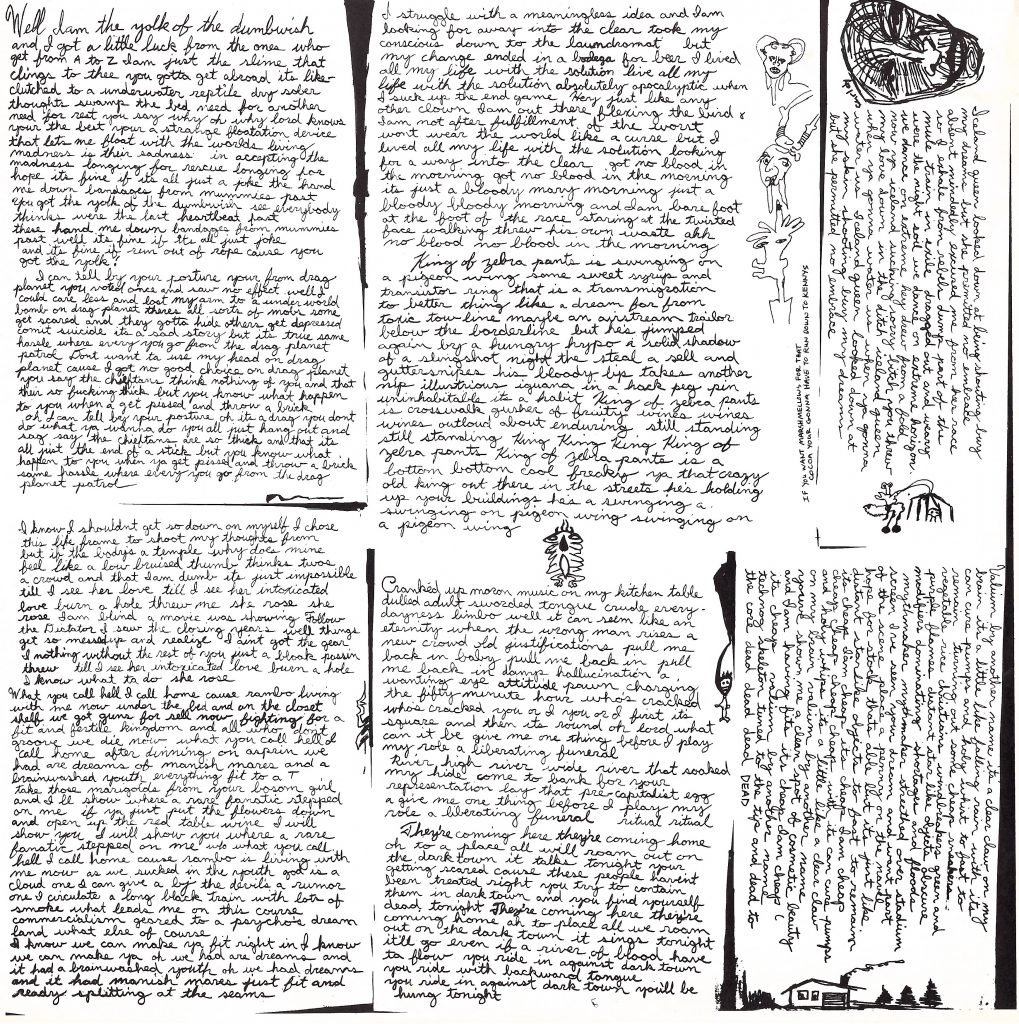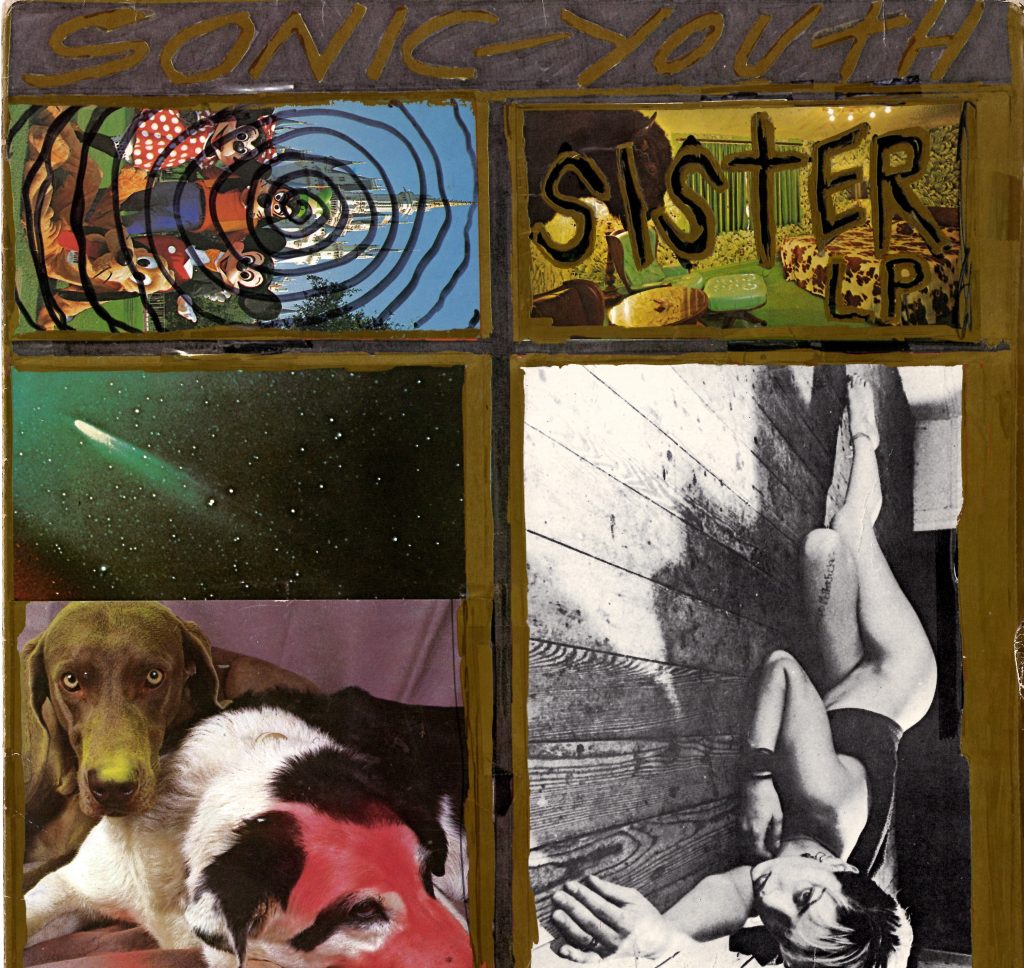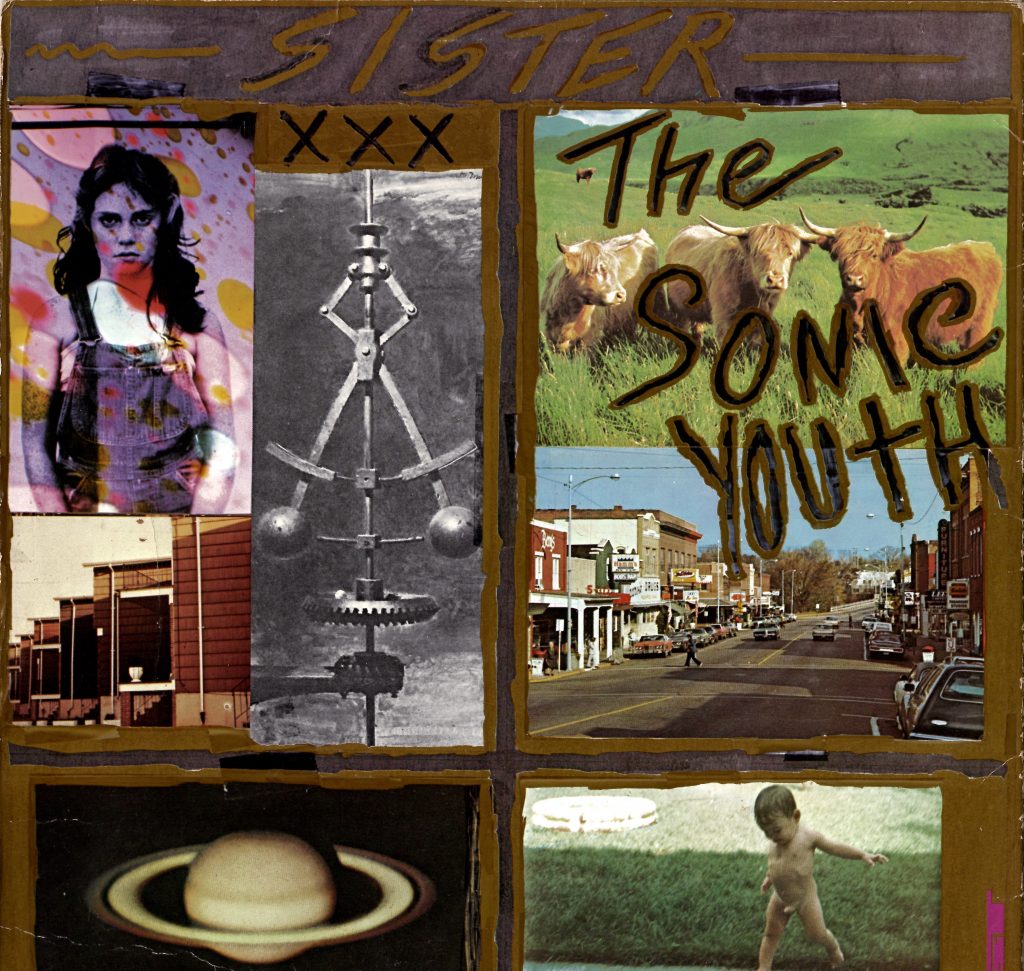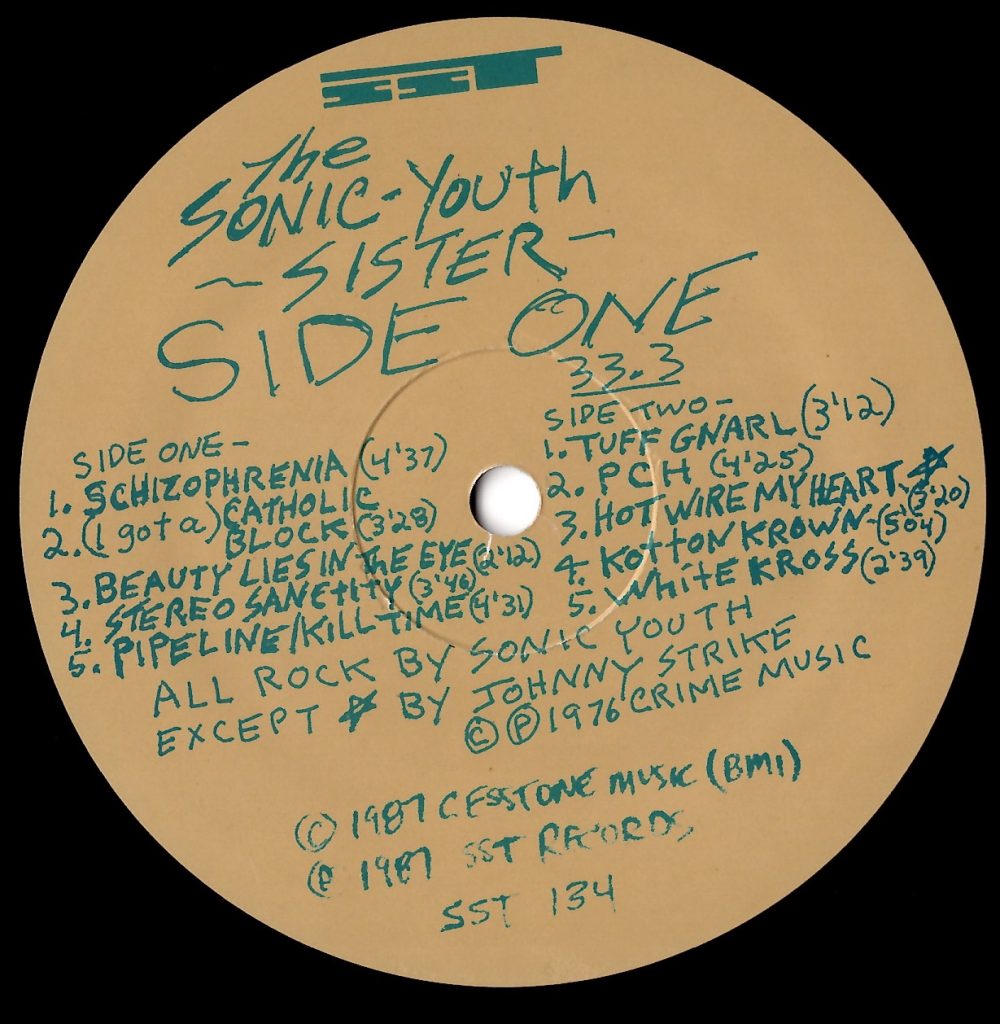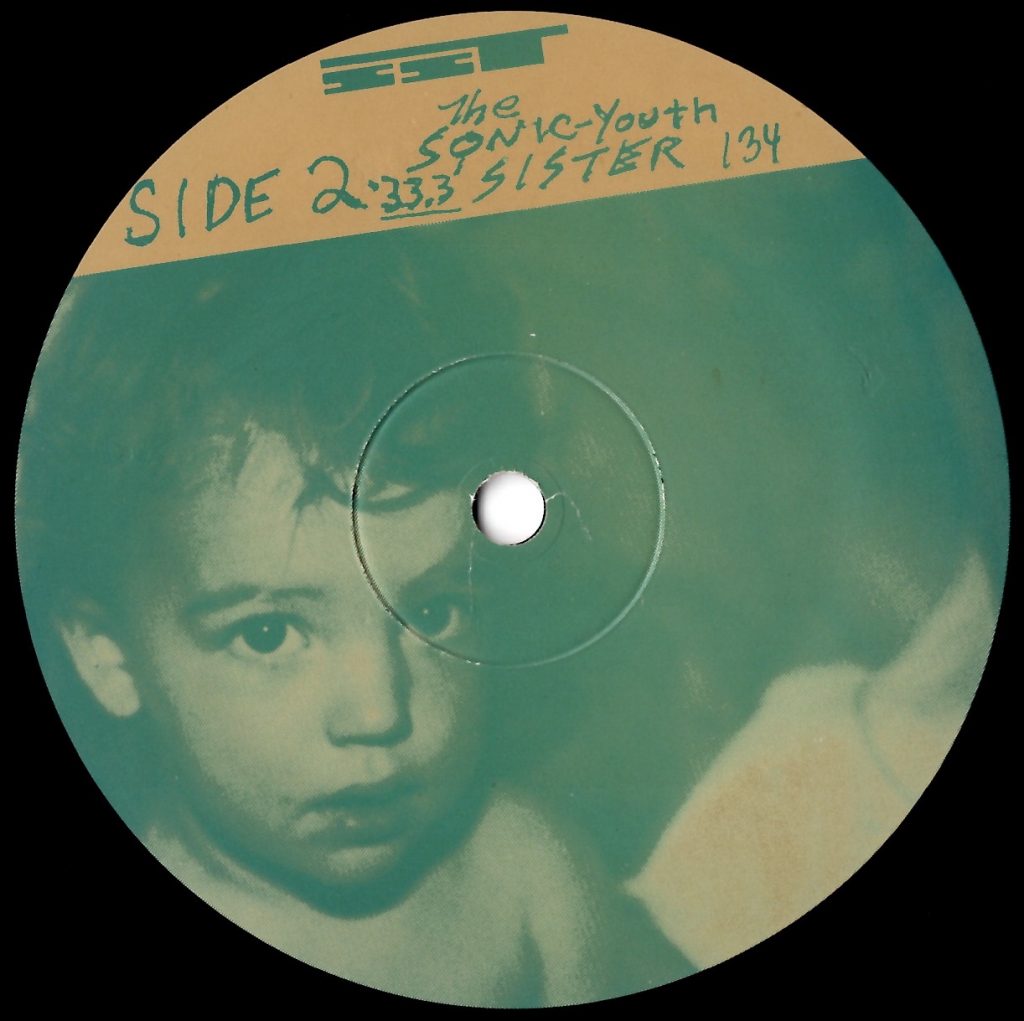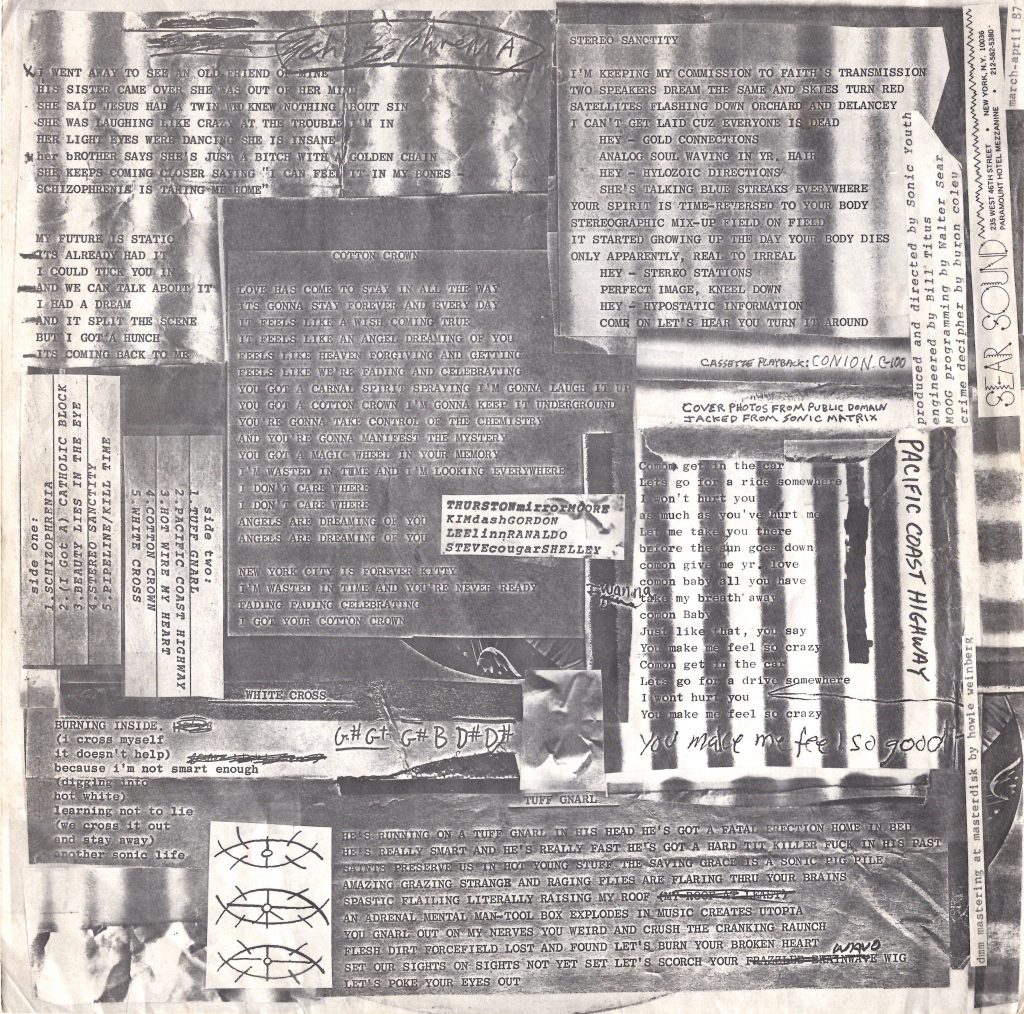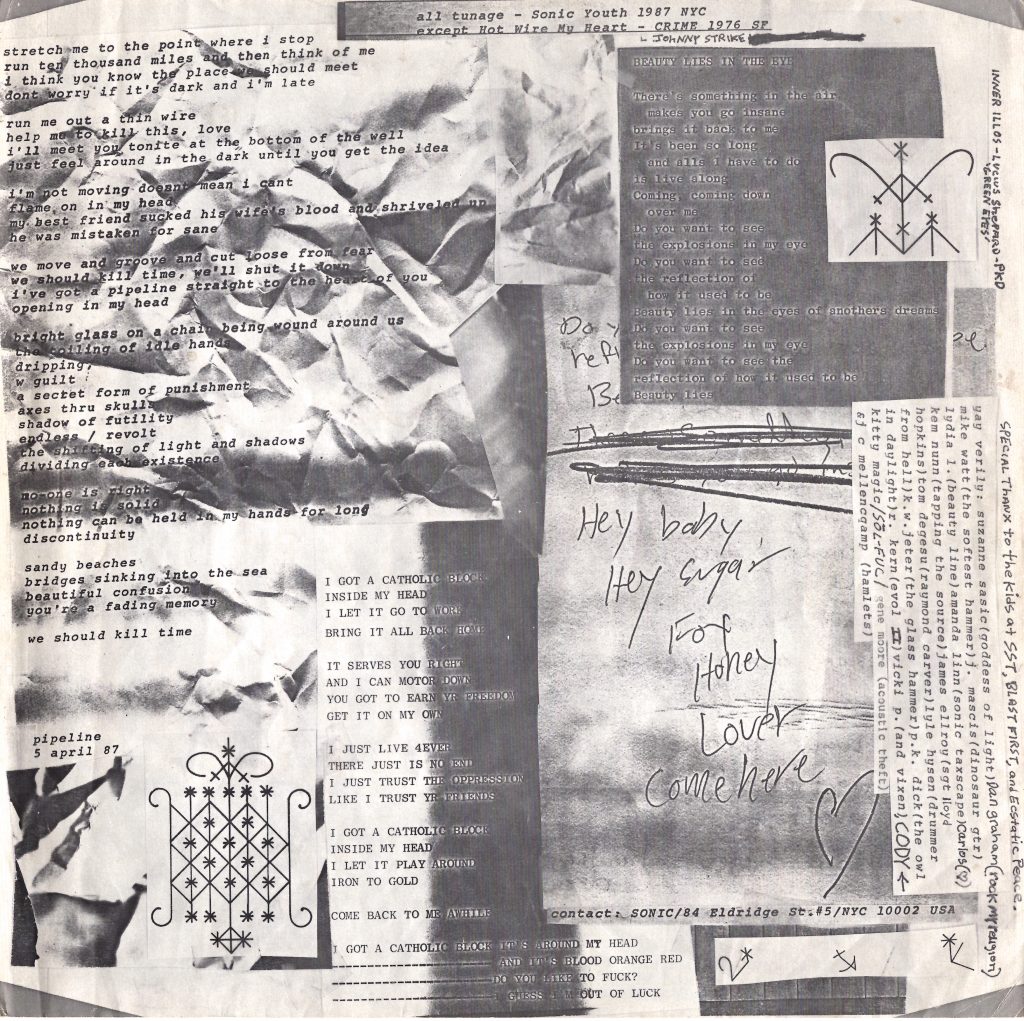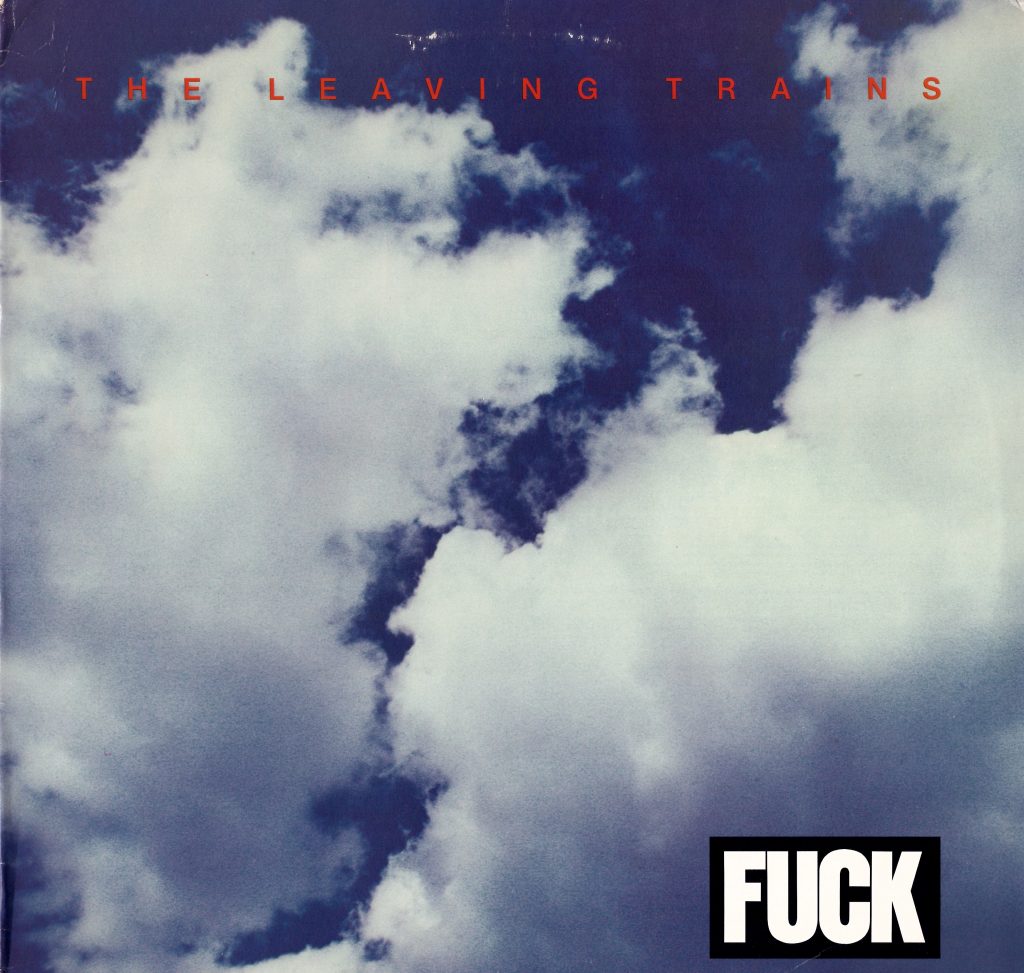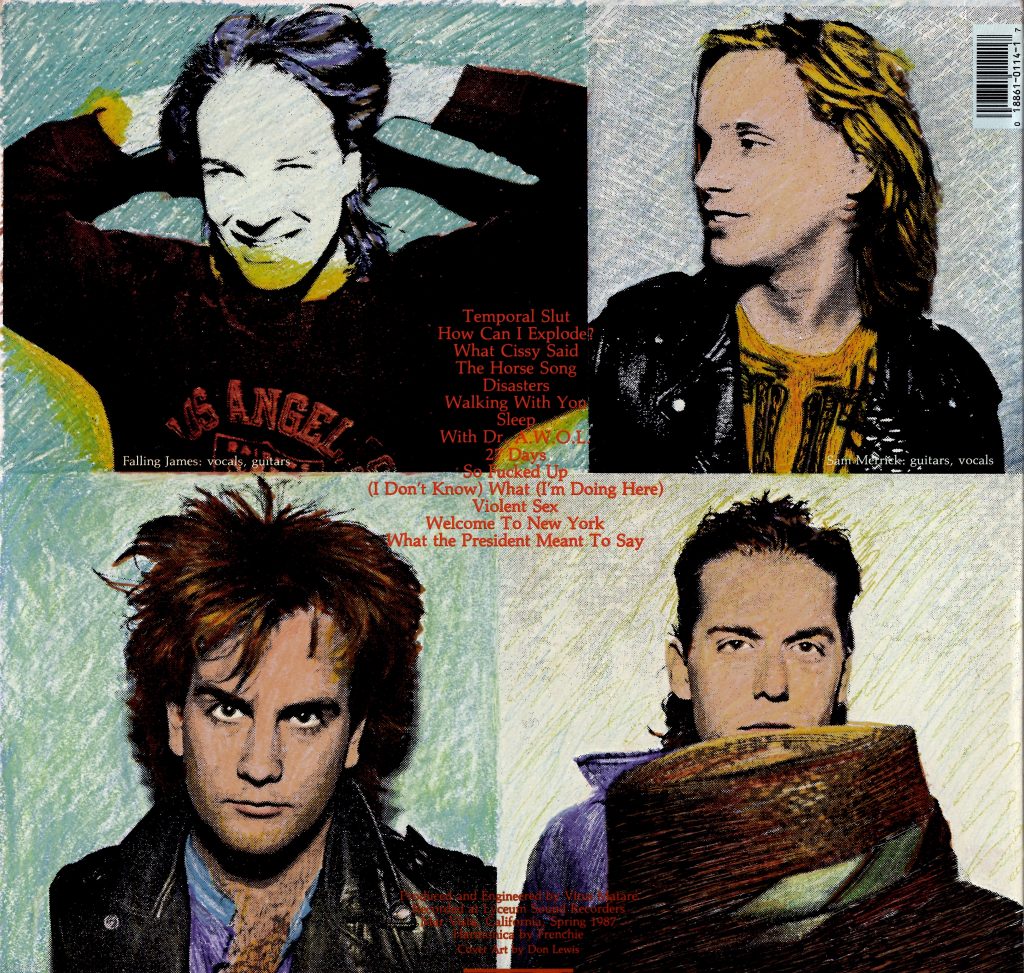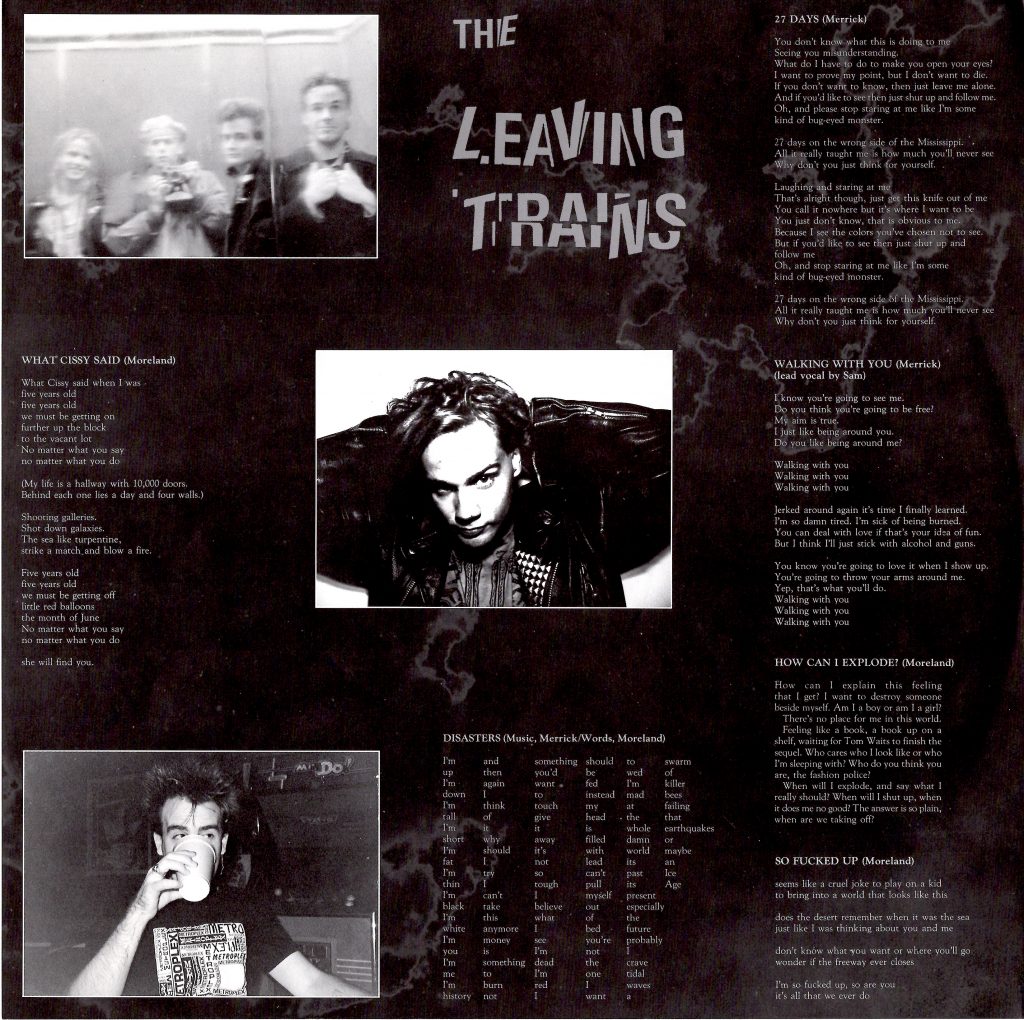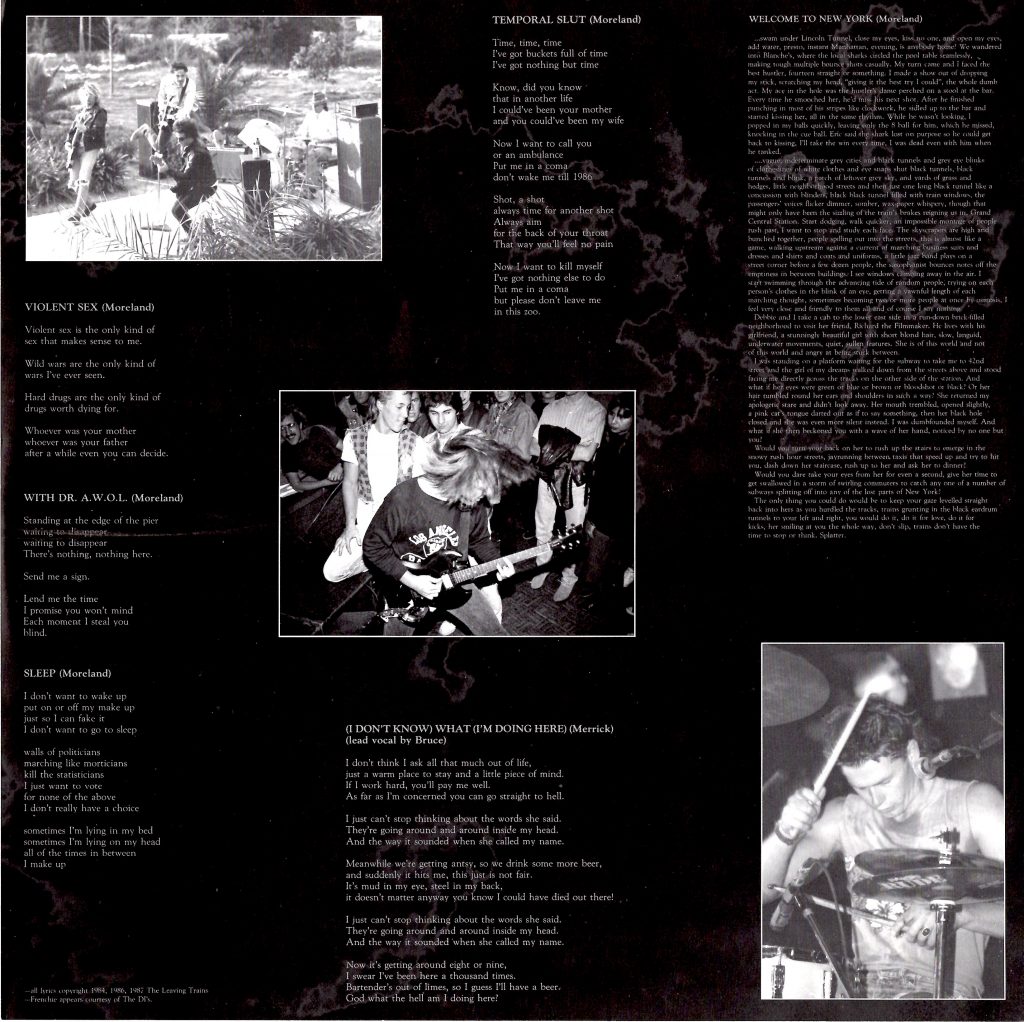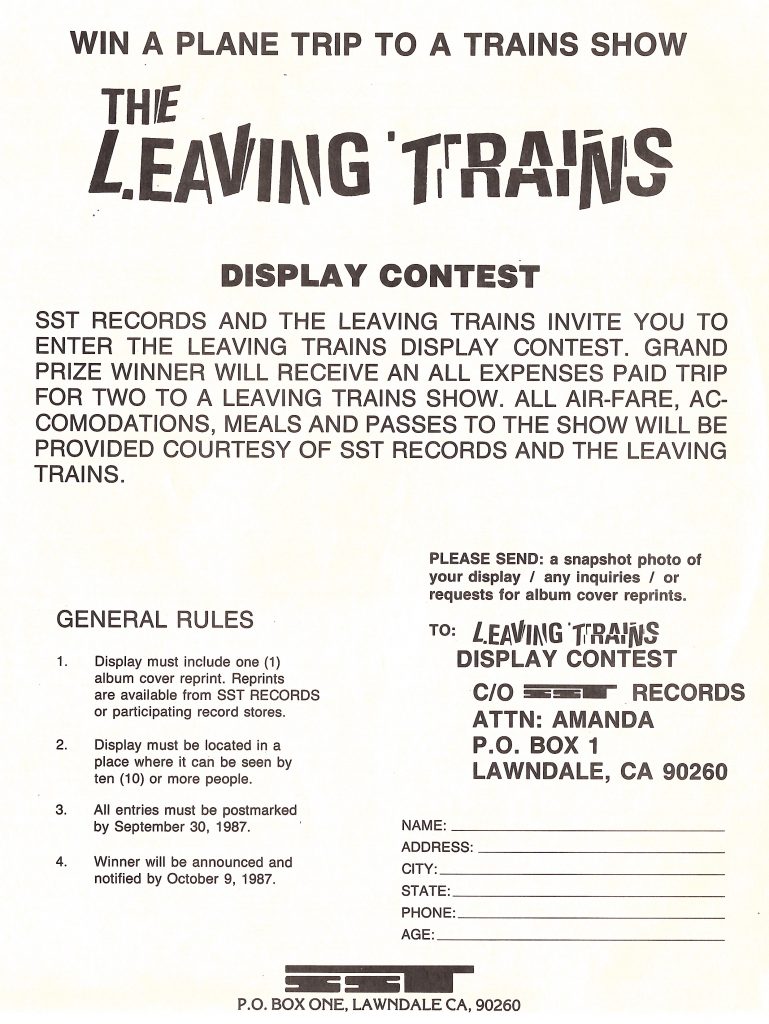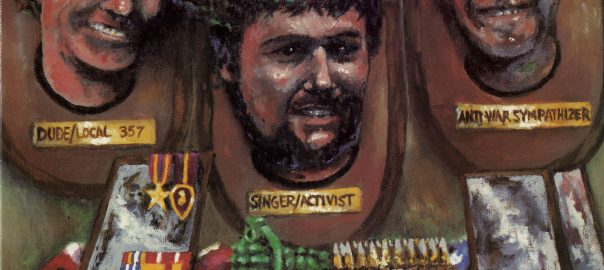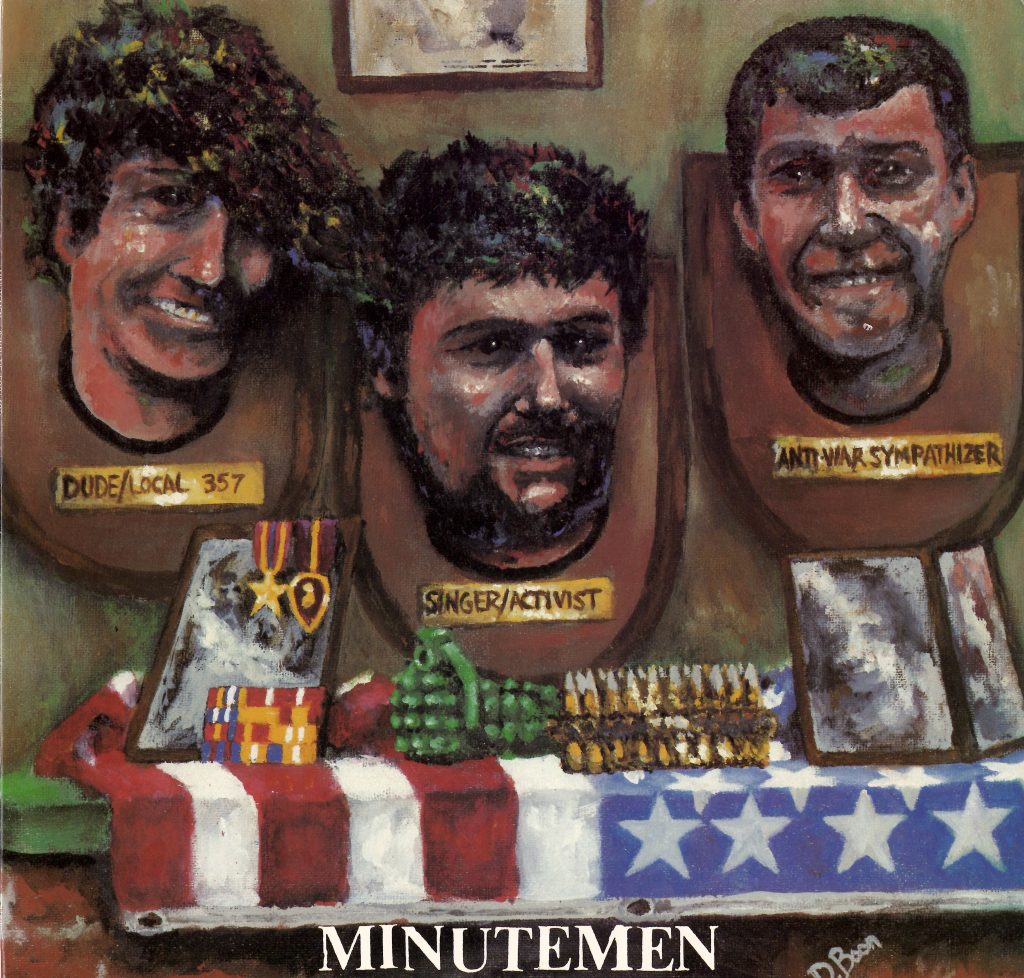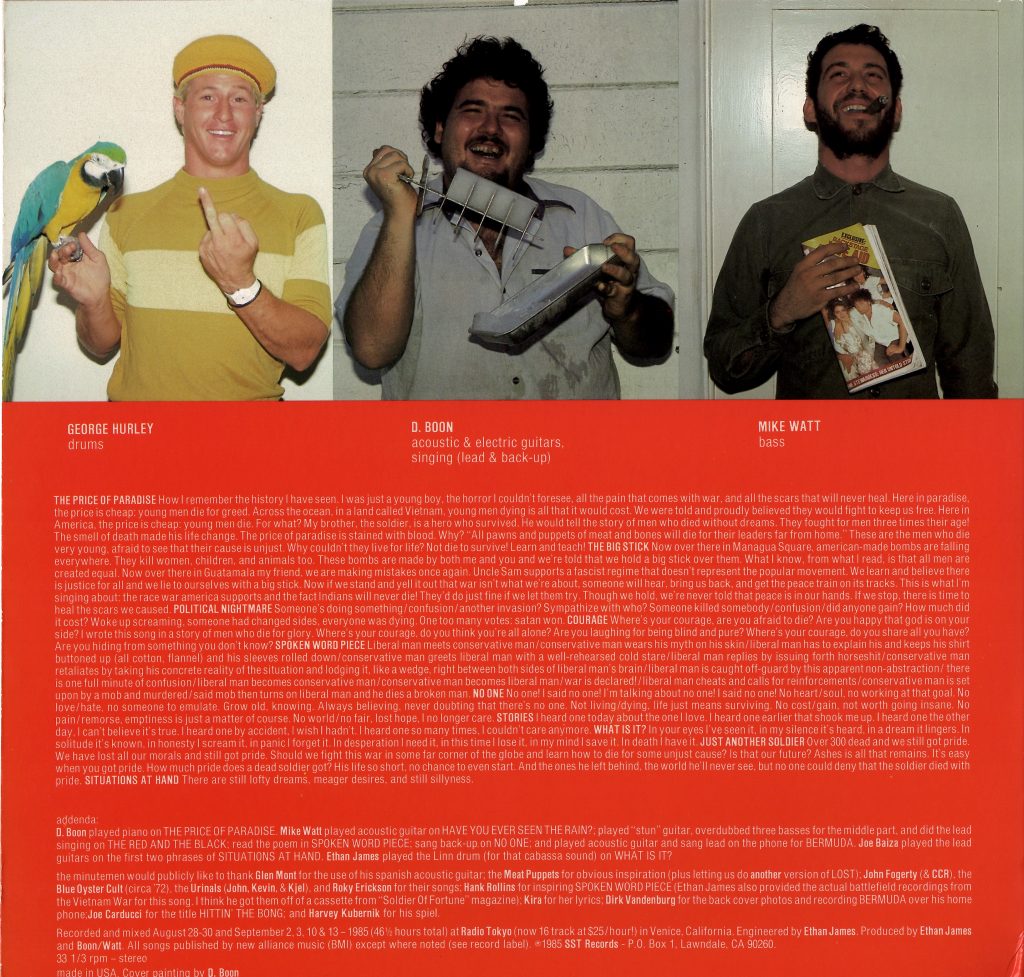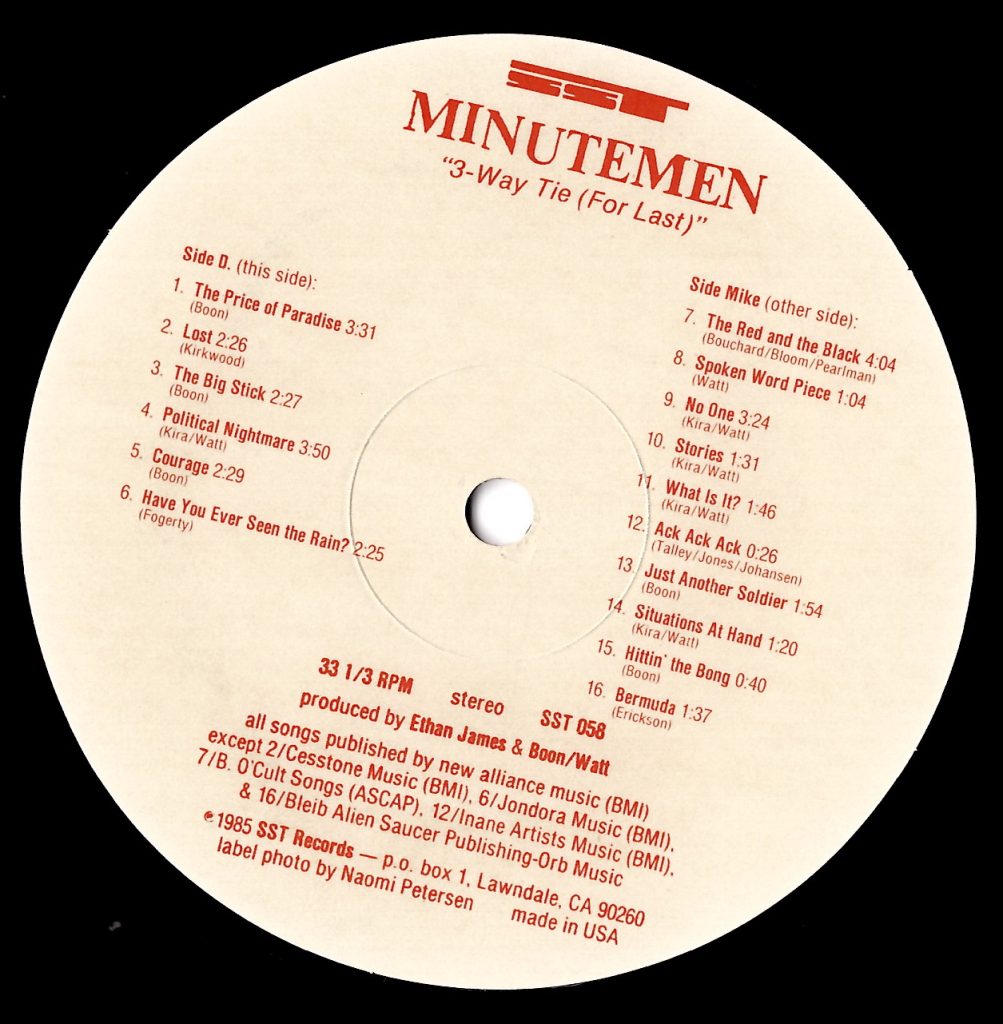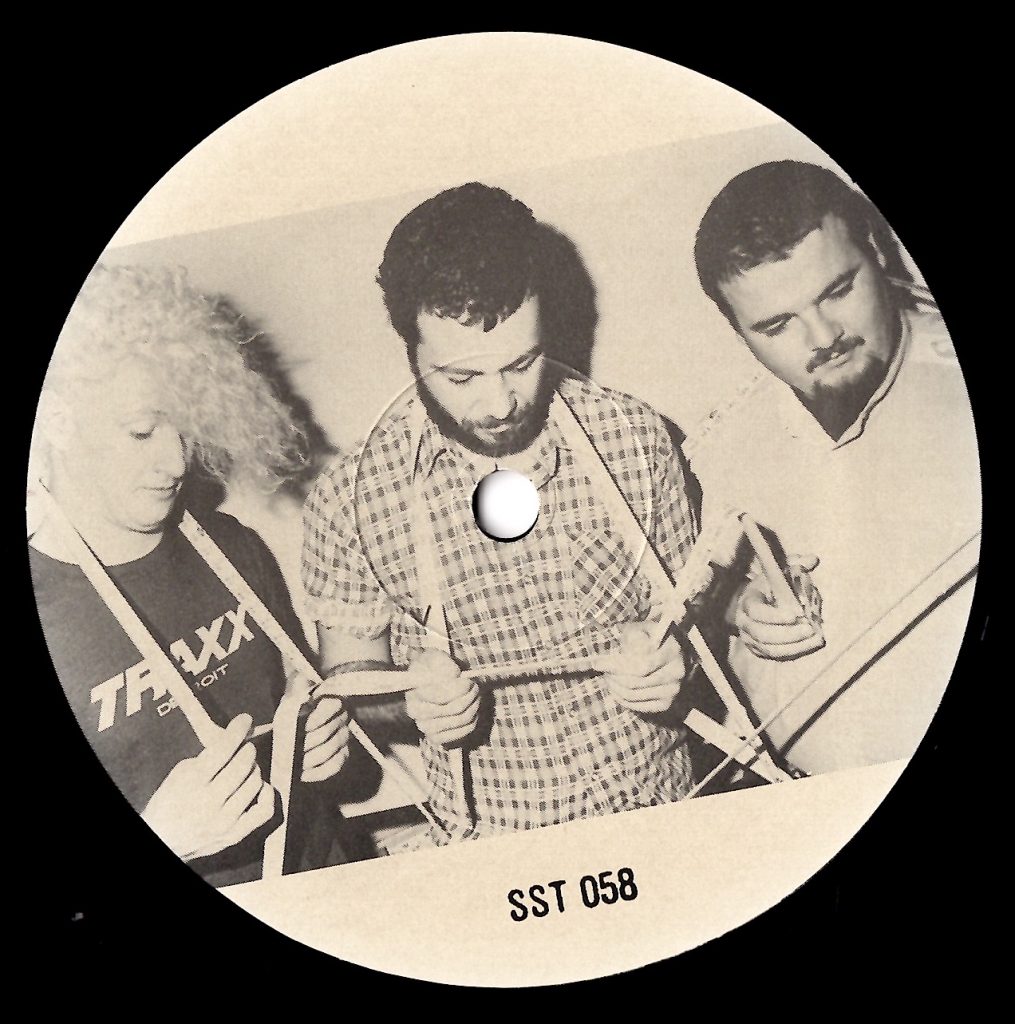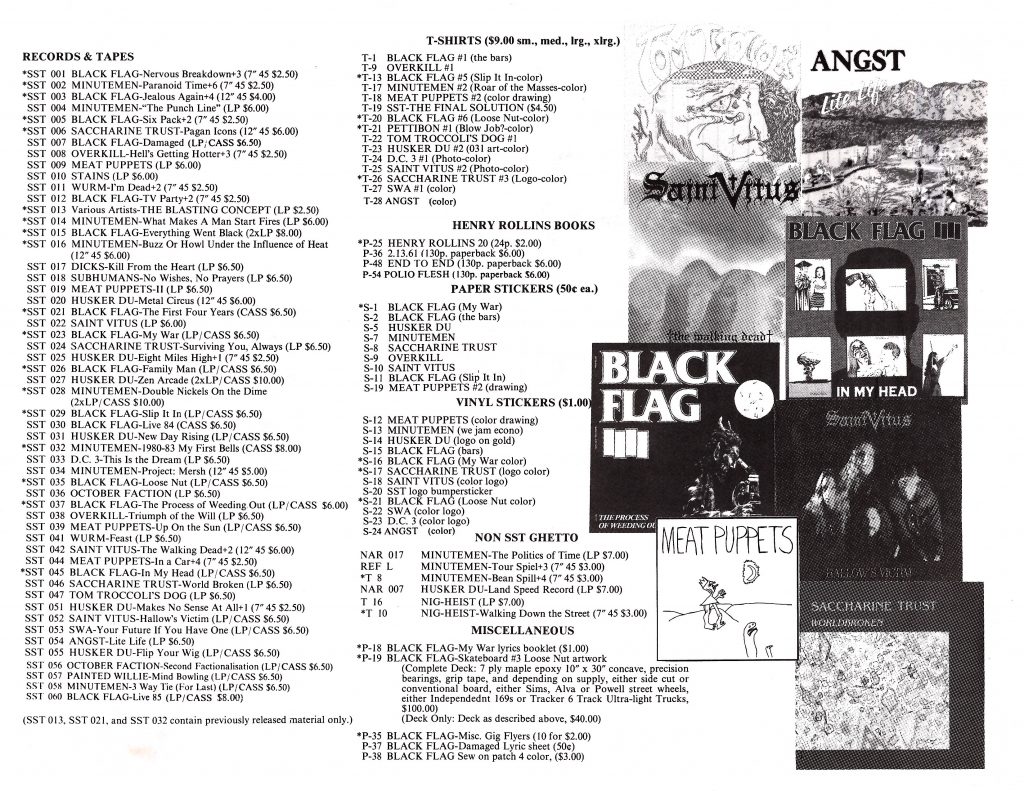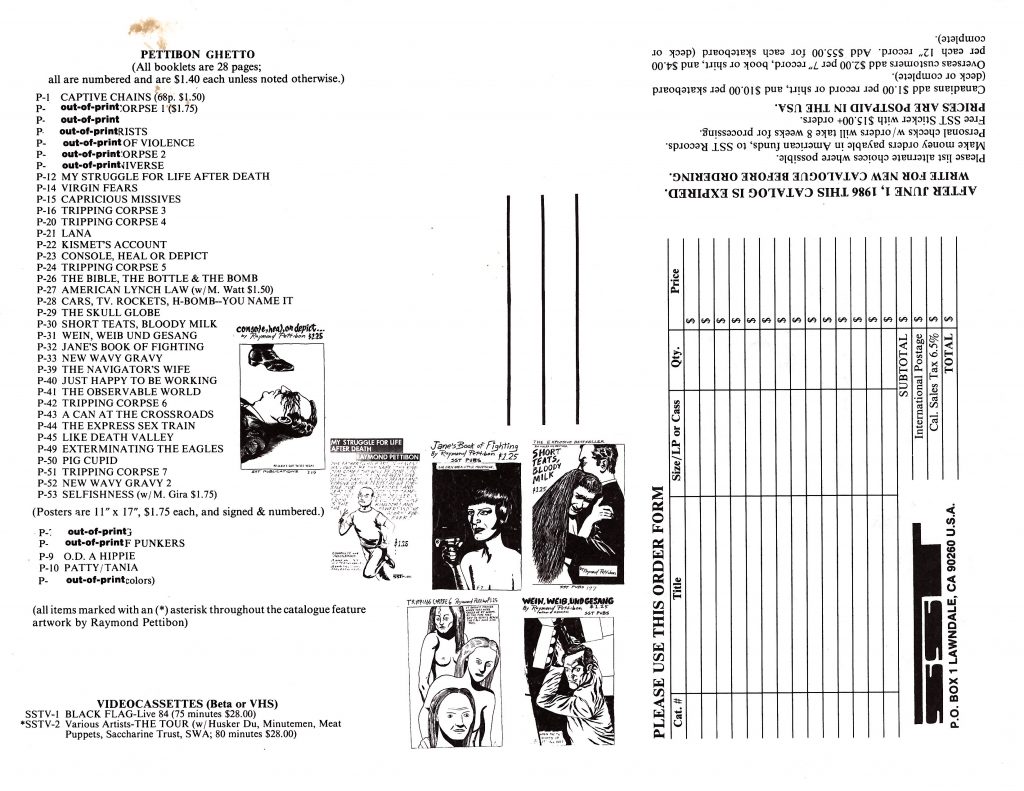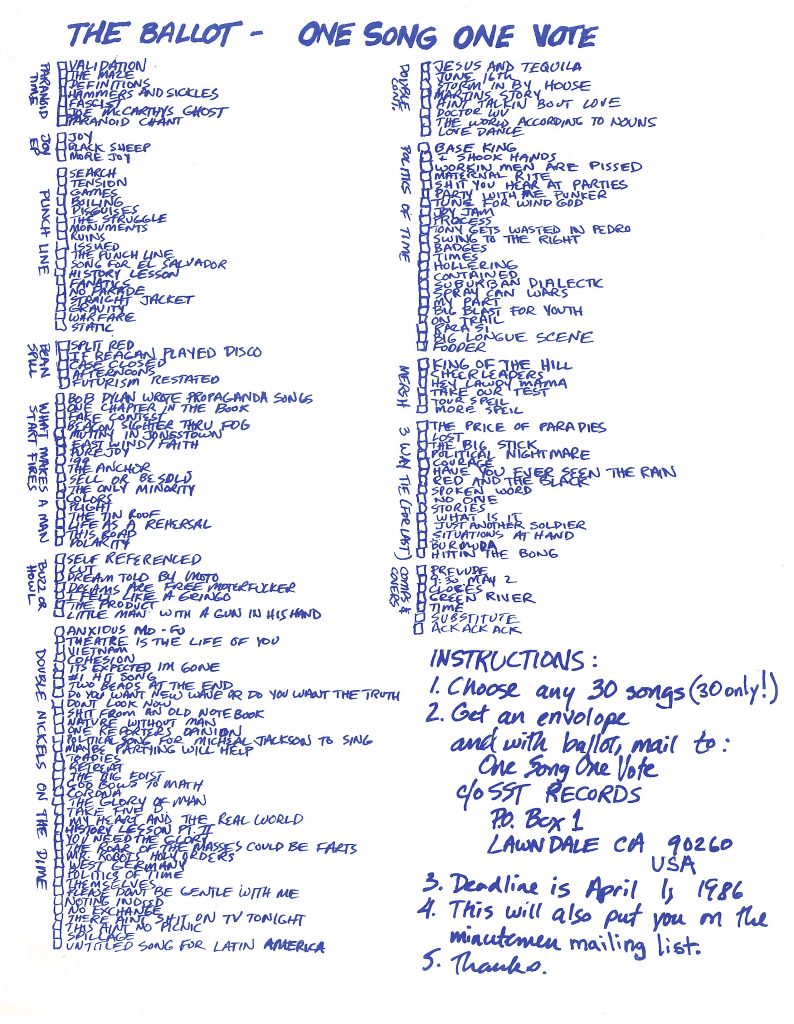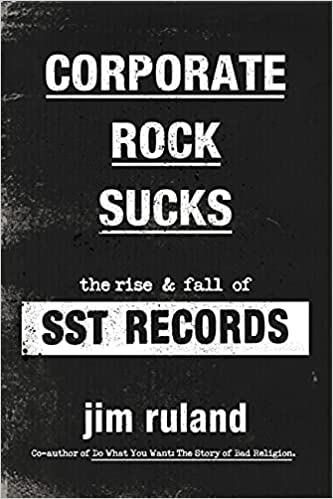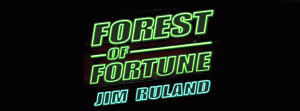Format: LP
Is Mike Vallely a good singer?
That’s the question that kept coming up while I listened to one of the last albums in the SST catalog: Good for You’s 2013 debut LP Life Is too Short to Not Hold a Grudge(SST 385). Pro skateboarder Mike V was infamously named the singer of Black Flag in early 2014, but he had been kicking around SST since 2003 when Black Flag reunited for its poorly received Benefit for Cats. During that misguided comeback, Vallely performed a few sets with the band, much to the confusion and consternation of Black Flag’s fans.
Many people believe Black Flag was goaded into reuniting a second time in 2013 after Keith, Chuck, and Dez formed FLAG with Bill Stevenson and Stephen Egerton of the Descendents and started ripping shit up.
But Jordan Schwartz, who moderates an SST page on Facebook, saw Good for You play in 2013 in front of a very small crowd and he believes that the underwhelming response to his new record Life Is too Short to Not Hold a Grudge was Ginn’s main motivation for getting Black Flag together again.

The problem with Vallely singing Black Flag is that sonically, physically, pretty much every category one can imagine, he comes across as a poor man’s Henry Rollins, a comparison that flatters neither party. But in Good for You, Vallely provides a better sense of what he can do, and I have to say I’m a fan. For one thing, he actually sings, which complements Ginn’s repetitive riffing on the record.
By this point, Ginn had released so many records by his various “bands,” which were essentially studio projects where Ginn played multiple instruments in a variety of styles none of which were hardcore punk, that the public had more or less tuned him out. But Ginn seemed to think he was on to something with Good for You, a name that can be read as a passive aggressive putdown and whose initials are GFY, i.e. go fuck yourself.
By 2013, SST was mostly putting out new releases in CD format, but Life Is too Short to Not Hold a Grudge came out on wax in two versions: black and white. I have the white vinyl and the type on the cover is embossed—a level of care that’s pretty remarkable considering that SST was just a shadow of its former self at this point.
But I haven’t addressed the elephant in the room. The thing that Good for You is best known for isn’t Vallely’s singing or Ginn’s guitar playing but the theremin.
Yes, Greg Ginn, the wizard of American hardcore, let the spooky-sounding wail of the theremin get its hooks into him.
In 2012, Ginn played a theremin-heavy set as The Royal We in a tent at Coachella and somehow managed to clear the room. From that point on Ginn was undaunted. It didn’t matter if he was playing as The Royal We, Good for You, or Black Flag, he was going to bust out his theremin.
The theremin was invented by a Russian scientist while conducting electromagnetic radiation research. He moved to New York and may or may not have been kidnapped by Russian spies and sent to a labor camp. The instrument never really caught on in the United States but was used to great effect in early science fiction films, such as Bernard Herrmann’s score for The Day the Earth Stood Still.
The theremin is featured on a number of songs on Life Is too Short to Not Hold a Grudge, especially on Side 2. On “It’s Just Business,” “Dreams,” and “Blaze of Glory” Ginn busts out the theremin in the spot where one might expect to hear a guitar solo. Overall, Life Is too Short to Not Hold a Grudge is mellower than many of Ginn’s “guitartechno” experiments and while I kinda like it the record ranks near the bottom of my SST collection.
I don’t have an issue with the theremin per se, but to my ears it all sounds the same. There’s only so much you can do with the instrument. Call me jaded, but if you want me to get excited about a theremin you have to set it on fire during a theremin duel accompanied by an enormous Tesla coil.
This post was originally published in slightly different form at Message from the Underworld.
